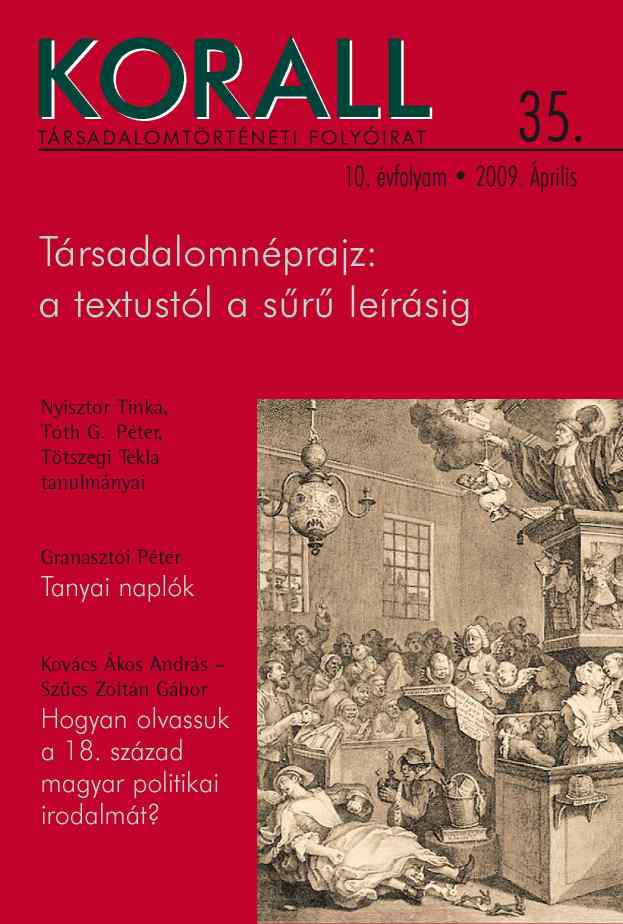Tárgyak, férgek, démonok. Társadalmi válságtünetek és demonológiai diagnózisok a kora újkori Magyarországon
Objects, Worms, Demons. The natural and magical miracle as material evidence in the demonological literature of early modern Hungary
Author(s): G. Péter TóthSubject(s): History
Published by: KORALL Társadalomtörténeti Egyesület
Summary/Abstract: Both demonology and medical learning wanted to define what material evidence they were to use in order to alleviate the politically rooted disease-symptoms of the early modern period. Finding the proper therapeutic treatment required the apt description of the pathology, revealing the causes and consequences, and making the right diagnosis. In relation to these requirements several key questions were formulated. Is it possible to infer the existence of demons from the fact that everyday objects (pots and dishes) started to shake? And vice versa, can the inexplicable “behaviour” of these objects indicate the existence of demons, devils or Satan himself, and their temptations? Is it possible to explain the strange illnesses that bear peculiar characteristics similar to that caused by the operation of witches or, on the contrary, do the odd and “miraculous” symptoms prove witches’ activity? Are demons capable to establish physical, sexual relationships with human beings, especially with women, to beget children as a tangible result of such relationships? If such children, that is, monstrous or deformed beings are born, are they indicative of Satan’s involvement in their conception? Can ghosts returning from Purgatory, or the living dead attest to their temptations or their presence in this world with material evidence? Or should we better interpret these phenomena the other way round, supposing that the material objects concerning the temptations of this world may indicate the existence of Purgatory or the activity of the living dead? Are there any prophetical signs about the end of the world or are they known only from Biblical traditions and prophecies? Or is the opposite true? If eschatological signs appear, are they to be interpreted as evidence for the impending end of the world? Most of the questions formulated this way are based on such a formal syllogism that responds to the normative requests of disciplines that include law, theology and medicine; and whose formal elements became valid within the systems of fulfillment that these disciplines have themselves. In this paper I attempt to introduce the scholarly literature based on these formal logical criteria that address material evidence, omens, prophecies, oracles and miracles. I conlude my essay with the overview of how this debate in European secondary literature has been received in Hungarian scholarship.
Journal: Korall - Társadalomtörténeti folyóirat
- Issue Year: 2009
- Issue No: 35
- Page Range: 5-42
- Page Count: 38
- Language: Hungarian

